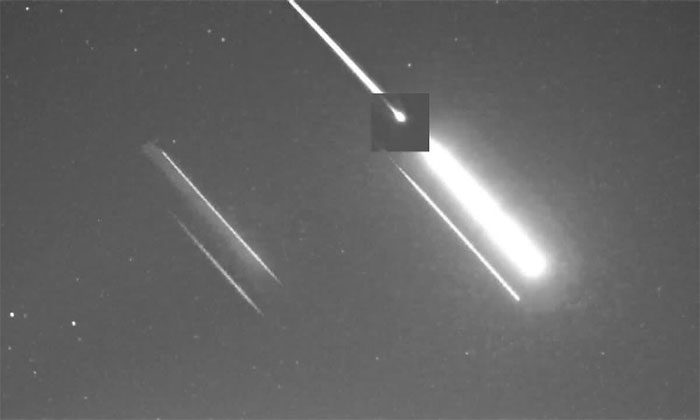Scientists estimate that there will be tens to hundreds of grams of meteorite material passing through the atmosphere and landing on Earth.
A meteor streaked across the sky on April 17 and may have left several fragments north of Argyle, Ontario, Canada. The Global Meteor Network (GMN), a scientific project that monitors meteors using small cameras installed worldwide, captured footage of this bright “fireball.” The GMN is operated by the Department of Physics and Astronomy at Western University.
“The fireball was particularly notable for its slow movement, traveling on an asteroid-like trajectory and ending very low in the atmosphere. These are all good signs that there are meteorite fragments that made it through the atmosphere and ‘survived.’” Denis Vida, a meteorite expert at Western University, stated.

The fireball was particularly notable for its slow movement.
Vida estimated the mass of the meteorite to be around 10 kg. “We predict there will be tens to hundreds of grams of meteorite material on the ground,” Vida said.
Western University hopes that meteorite hunters will contact the Royal Ontario Museum if they find any fragments. They can store the dark-colored, often magnetic pieces in plastic bags or aluminum foil to keep them as pure as possible. Western University also reminds hunters to seek permission from landowners before collecting any meteorite fragments.
Vida also provided reasoning for sharing meteorite fragments with scientists rather than keeping them in personal collections. “The research community is very interested in meteorites because studying them helps us understand more about the information and evolution of the Solar System,” he explained.





















































